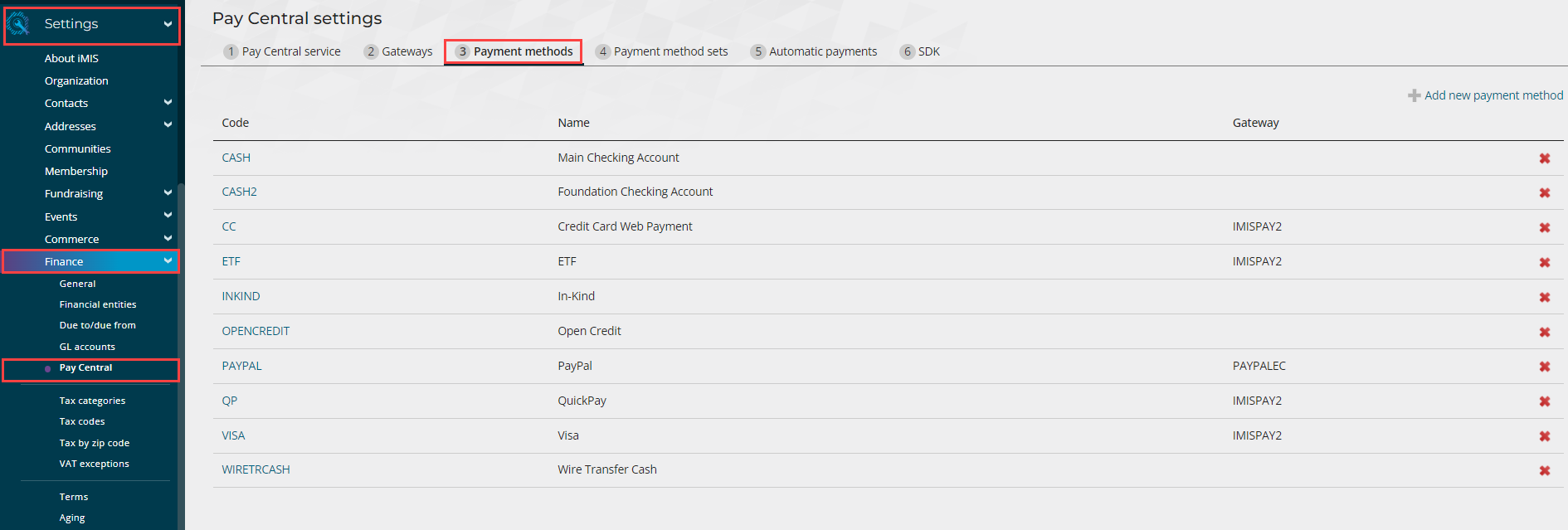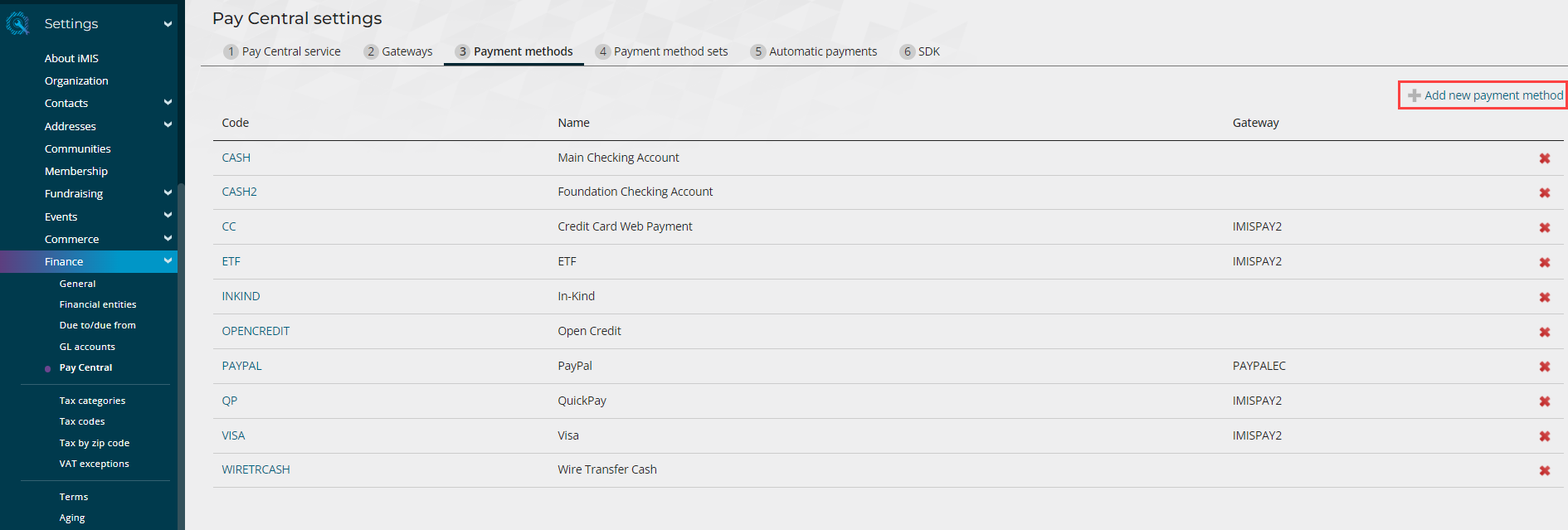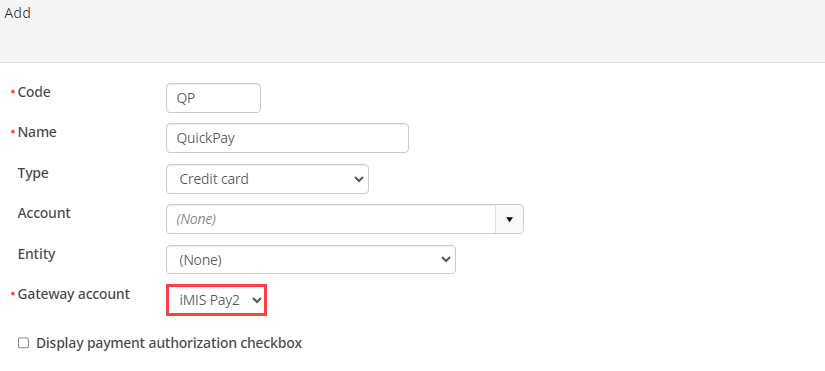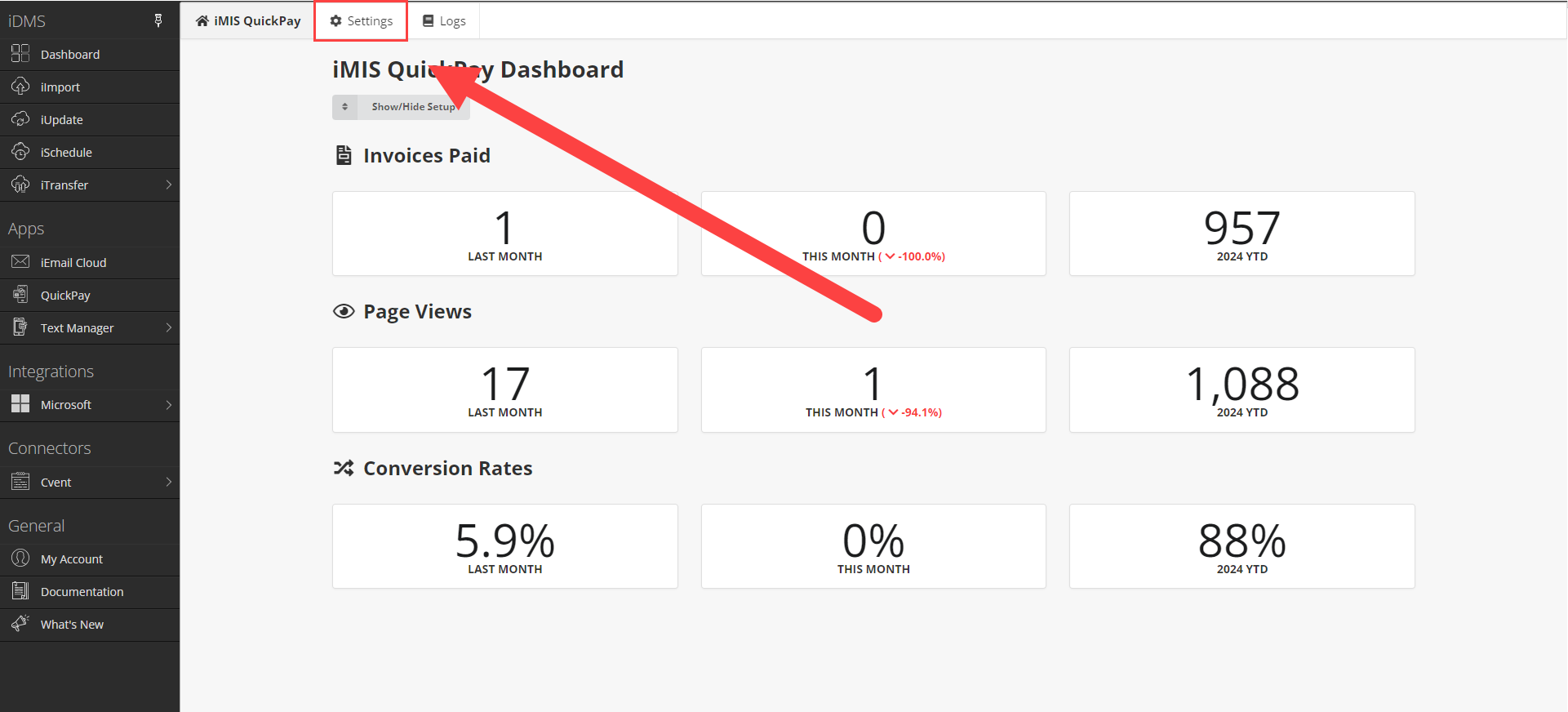Setup and Onboarding Guide
This article outlines how to set up and configure iMIS QuickPay.
![]() Prerequisites for iMIS QuickPay
Prerequisites for iMIS QuickPay
The following prerequisites must be met before you can use iMIS QuickPay.
iMIS EMS Cloud or On-Premises (20.3.166 or newer)
iMISPay Central SDK license activated (check in Staff Site > Settings > About iMIS)
iMISPay set up as a payment gateway (check in Staff Site > Settings > Finance > Pay Central > Gateways tab)
At least one Payment Method set up to use the iMISPay gateway (check in Staff Site > Settings > Finance > Pay Central > Payment methods tab). It is recommended to have a Payment Method specifically for QuickPay, which has the iMISPay gateway
1. Verify Pay Central SDK is Licensed
Visit your license page in iMIS (under Settings > About iMIS). If the Pay Central SDK is not licensed, please email orders@imis.com requesting that the Pay Central SDK license be enabled for your iMIS database.
2. Update iMISPay Central SDK Settings
Navigate to your iMIS Staff site.
Under Settings > Finance > Pay Central, click on Tab 6: SDK.

Pay Central SDK settings inside the iMIS Staff site.
Add the following text into the Allow payments from these external domains field:
quickpay.cloud.csiinc.com
If you already have other entries in that field, add ours on a new line, as shown in the screenshot above. Don’t remove any other entries, as this may cause other integrations to stop working.
3. Access iMIS QuickPay from the Cloud Dashboard
Navigate to the Cloud Dashboard and access iMIS QuickPay. You may need to assign security first.
You will be greeted by the dashboard and a welcome message:
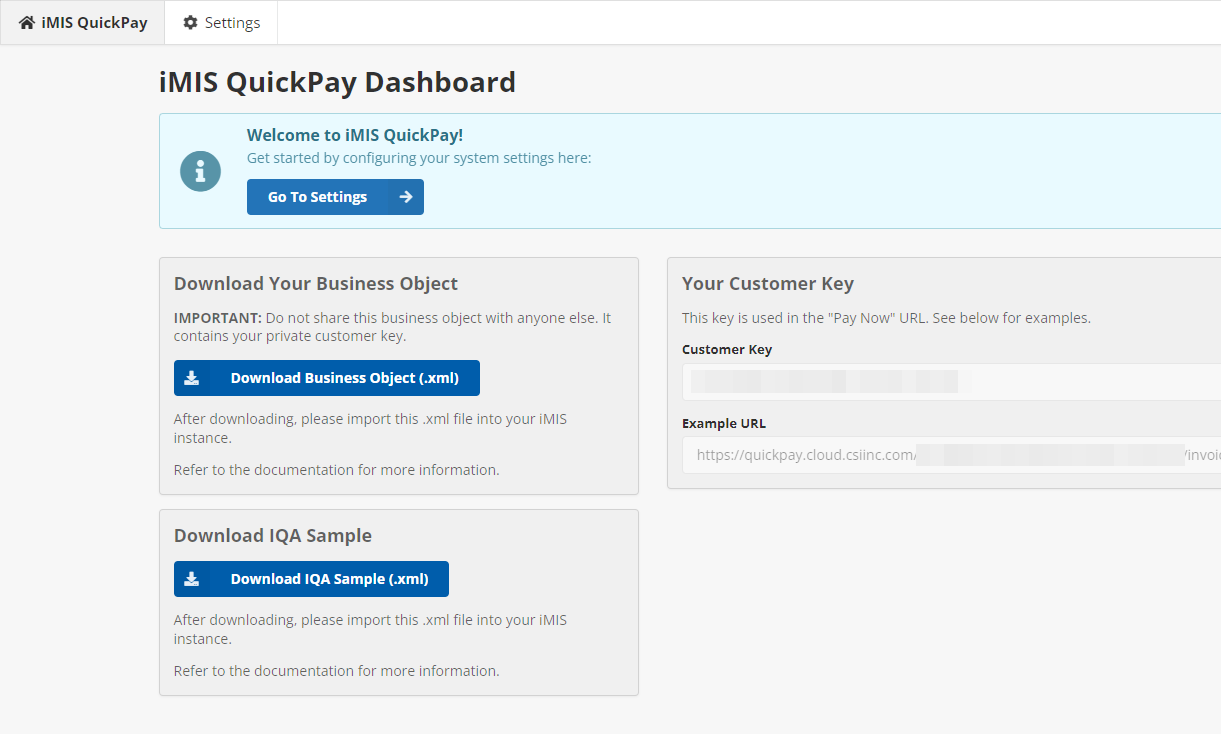
First-time login to iMIS QuickPay on the CSI Cloud Dashboard.
4. Configure Settings
Configure your QuickPay application settings by clicking on Settings in the top nav.
Refer to our Settings documentation for instructions on configuring your QuickPay settings.
5. Download Your Business Object
On the app homepage (click on iMIS QuickPay in the top nav), click the Download Business Object button.
This will download an .xml file that contains your business object which can be used to construct the payment URLs you can send out in a communication template.
Do not share your business object with anyone else.
This business object is specially constructed to only work with your instance of iMIS. Using this business object on a different iMIS system will result in errors.
If you have multiple instances of iMIS (e.g. Test and Live), please sign into the CSI Cloud Dashboard using the corresponding Cloud ID that points to that iMIS instance, and then proceed to download the business object for that instance.
What To Do When Your Cloud ID Changes
If the name of your Cloud ID changes (e.g., you request CSI Support to change your Cloud ID from ABCSTAGING to ABCIMIS), you MUST follow these steps. Your QuickPay URLs will change as a result of the Cloud ID change.
Remove and purge the old CSI_QuickPay_Invoice business object from iMIS.
On the CSI Cloud Dashboard, in the QuickPay dashboard, download your new business object.
Import the new business object into iMIS.
Any existing IQA queries that reference the business object should continue to function - the business object name is always the same.
Note that your QuickPay URLs are different - if you recently sent out QuickPay links, you will need to send out new ones as a result of your Cloud ID changing.
Import the .xml file into iMIS - in the iMIS Staff site, navigate to RiSE > Business Object Designer and click Import. Select the .xml file you downloaded from the iMIS QuickPay dashboard.
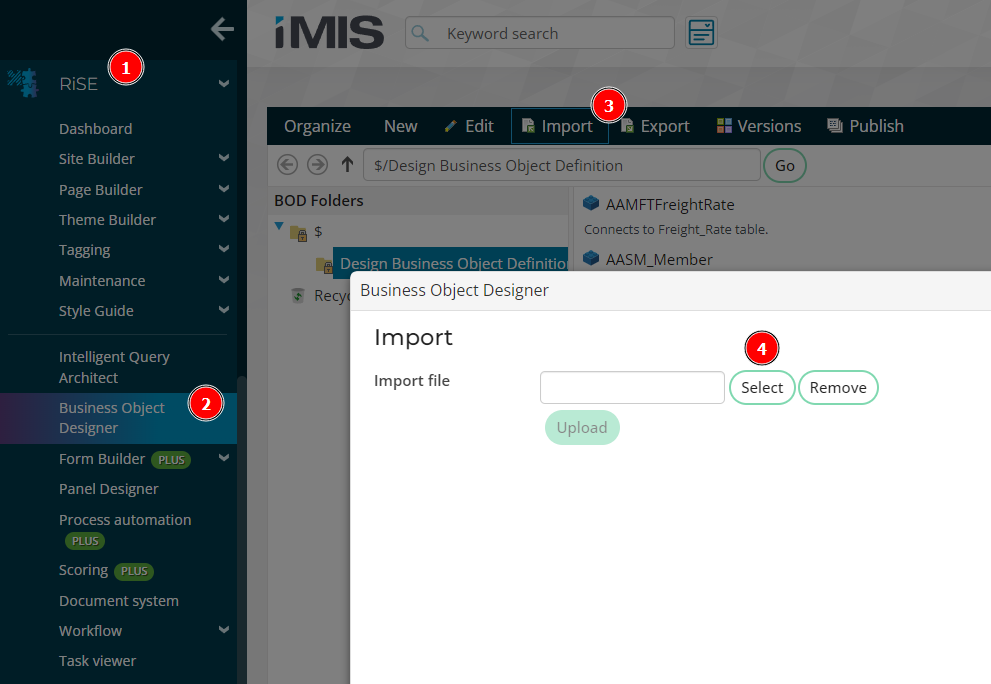
Import the .xml file you downloaded from the QuickPay dashboard.
Press Upload. Then, on the next screen, press Import, then Close.
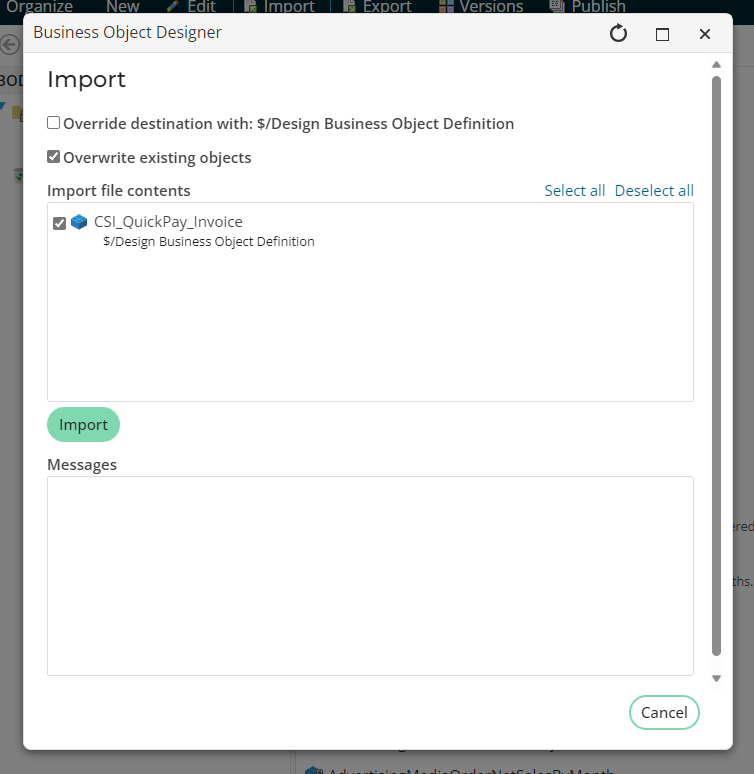
Import the business object and close the window.
For the final step, publish the business object.
5a. QuickPay URL Changes Starting in 2024.10.0
As of 1 Oct 2024, QuickPay has added a new URL format to support cash-based dues invoices. This fixes the error code: 0x000B.
![]() The previous URL format will continue to work without issue, even if you update your business object in iMIS.
The previous URL format will continue to work without issue, even if you update your business object in iMIS.
To use the new URL format, the business object will need to be removed and replaced. Follow these instructions to update your QuickPay business object:
Purge (don’t just delete) the business object "CSI_QuickPay_Invoice" from iMIS.
Log into the CSI Cloud Dashboard and select the QuickPay app.
Download the new business object using the Download Business Object button.
You may need to click on "Show/Hide Setup" at the top of the homepage to see the button.
Import this new business object into iMIS, and ensure that it publishes.
If a 🟥 or 🟨 bar is showing next to the name, select it and press Publish.
Run the QuickPay Invoices IQA and check the URLs.
If the URLs contain /invoiceid/ towards the end of the URL, you have the new URL format.
6. (Optional) Download the Sample IQA Query
Also included on the dashboard is a sample IQA query that references your business object and shows all outstanding invoices that can be paid via QuickPay, including the QuickPay URL needed to pay. This IQA query is only a sample, you may choose to author your own IQA query instead, especially if you intend on using the IQA query with a communication template.
7. Next Steps
Once the iMIS business object and IQA query are installed in your iMIS environment, your next steps are to identify how you’d like to use the iMIS QuickPay payment links.
RiSE Elements Provided with iMIS QuickPay
The only RiSE elements provided for QuickPay are a business object and an IQA query. Any additional communication templates, process automation tasks, or receipts must be built in your iMIS environment.
Receipts: To use iMIS to generate a receipt for QuickPay payment, please see our receipts article.

